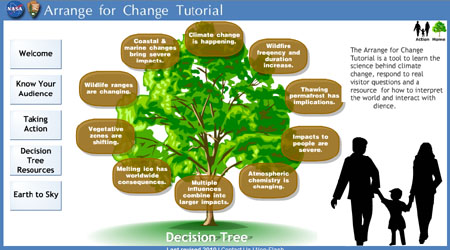Showcase
After participating in an Earth to Sky workshop, ETS members are encouraged to create action plans– and ultimately to complete their own project. Please browse through these products to see what others have created, to gain some inspiration, or to connect with others who are developing materials in your field of interest.
This resource is from 2011.
One of the biggest challenges faced by front-line communicators of climate change is how to organize and keep track of the overwhelming amount of information available from sources all over the planet. We developed this training tool to help bring key pieces of the most current climate science into a useful format that interpreters and educators could apply in their daily contacts.
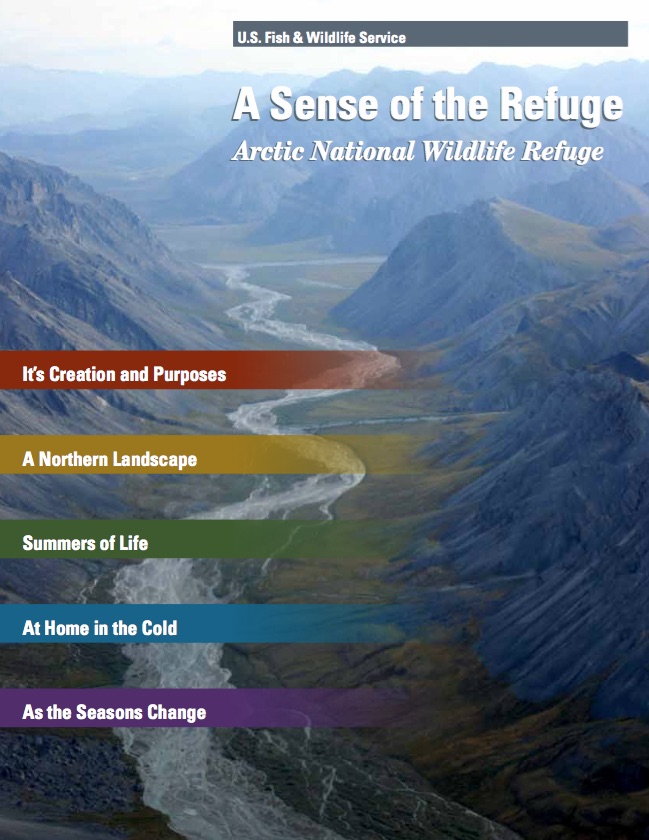 Cathy Curby, a biologist and interpreter from the Arctic National Wildlife Refuge in Fairbanks, has been actively engaged with Earth to Sky for 7 years. She has been a participant, coach and facilitator at several EtS workshops. In addition to mentoring others on the issue of changing climate, she has been responsible for several products in use by visitors and travelers at the high profile, Arctic National Wildlife Refuge in Alaska. These products reflect both innovation, and careful evolution of communication strategies as her audiences have changed over time.
Cathy Curby, a biologist and interpreter from the Arctic National Wildlife Refuge in Fairbanks, has been actively engaged with Earth to Sky for 7 years. She has been a participant, coach and facilitator at several EtS workshops. In addition to mentoring others on the issue of changing climate, she has been responsible for several products in use by visitors and travelers at the high profile, Arctic National Wildlife Refuge in Alaska. These products reflect both innovation, and careful evolution of communication strategies as her audiences have changed over time.
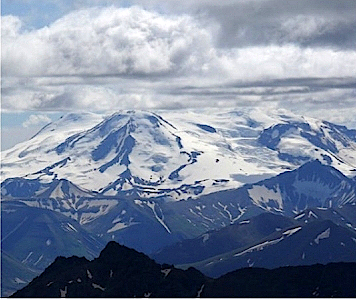 A Chapter from Katmai Employee Manual - an iBook
A Chapter from Katmai Employee Manual - an iBook
Here’s a new product in use this season at Katmai National Park and Preserve in Alaska. ETS Alumni Mike Fitz, put together a new chapter in their iBook employee manual focusing on the science and best practices of communicating with Katmai visitors about climate change. There are links below to pdf and text versions of his chapter, and it may be something that could easily be used by other parks with similar staffing.
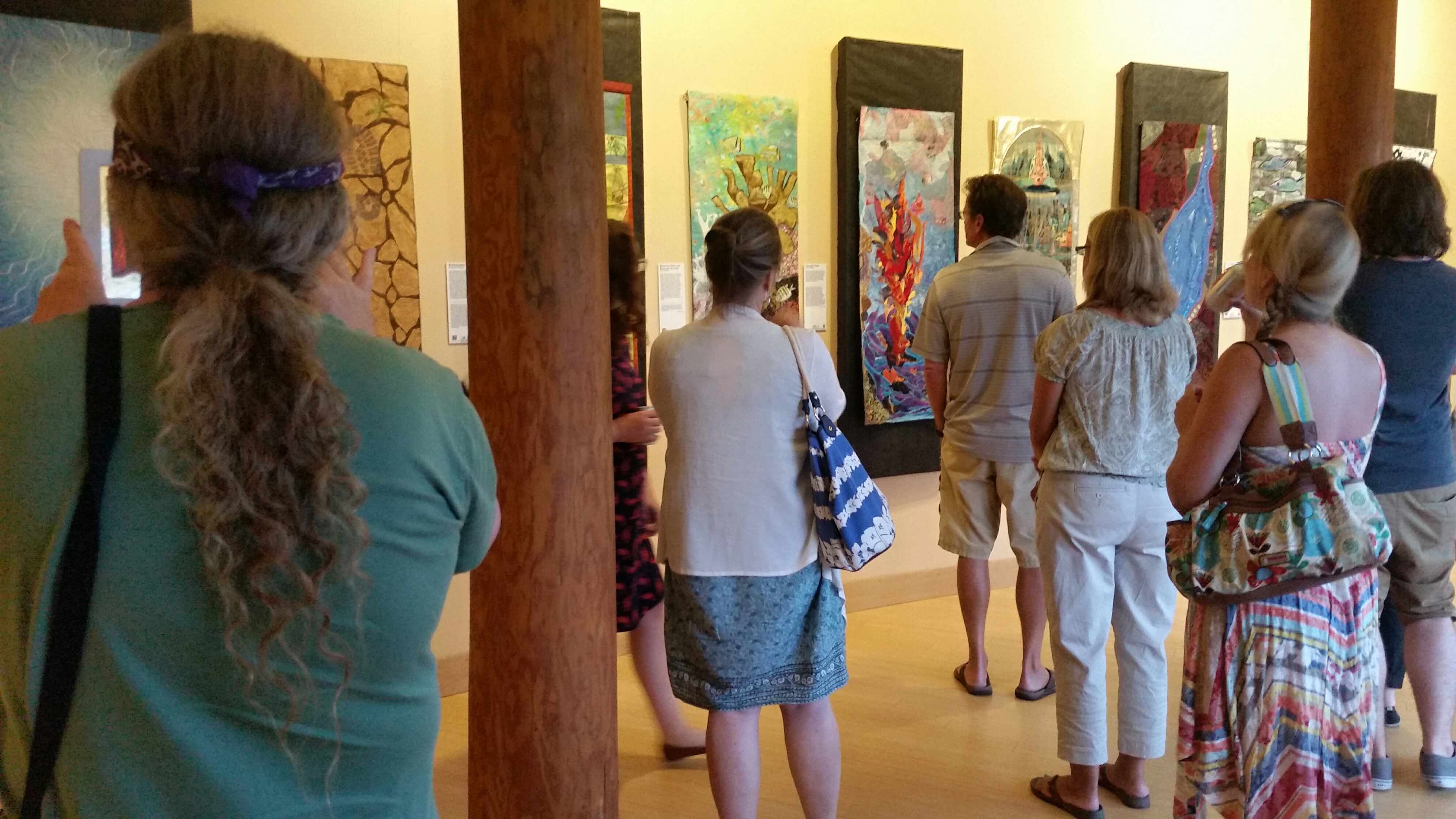 Here’s a unique product from one of our long-term Earth to Sky Alum’s, Gary Bremen. After nearly two years of planning and legwork, Biscayne National Park and Studio Art Quilt Associates (SAQA) have debuted “Piecing Together a Changing Planet,” a traveling exhibition of 26 art quilts interpreting climate change and other anthropogenic impacts on America’s national parks. The show has finished its first run of 10 venues, which was the commitment of locations originally planned for inclusion. It survived the Gatlinburg fires last December, adding an additional, climate-change-related wrinkle, and opened for a South Florida encore at the University of Miami back in March (where it was paired with exhibits on research by UM faculty, students and alumni). The City of Sequim, Washington is paying for a final show this summer, through the end of June, before the show is dismantled, and its sold pieces go to their new homes. The show has been seen by more than a quarter million visitors at the 10 venues, plus lots of great newspaper stories, magazine articles, and other media.
Here’s a unique product from one of our long-term Earth to Sky Alum’s, Gary Bremen. After nearly two years of planning and legwork, Biscayne National Park and Studio Art Quilt Associates (SAQA) have debuted “Piecing Together a Changing Planet,” a traveling exhibition of 26 art quilts interpreting climate change and other anthropogenic impacts on America’s national parks. The show has finished its first run of 10 venues, which was the commitment of locations originally planned for inclusion. It survived the Gatlinburg fires last December, adding an additional, climate-change-related wrinkle, and opened for a South Florida encore at the University of Miami back in March (where it was paired with exhibits on research by UM faculty, students and alumni). The City of Sequim, Washington is paying for a final show this summer, through the end of June, before the show is dismantled, and its sold pieces go to their new homes. The show has been seen by more than a quarter million visitors at the 10 venues, plus lots of great newspaper stories, magazine articles, and other media.
 Cathy Curby, long-time ETS alumnus and coach, recently produced this interpretive handout to help her visitors at the Arctic National Wildlife Refuge in Alaska. It’s a relatively simple product, intended to be distributed to people who visit Kaktovik (Barter Island) to view Polar Bears. The refuge staff also plan to use it as a downloadable document on the refuge website, and for teachers, students, or anyone else for which a pledge like this would be appropriate.
Cathy Curby, long-time ETS alumnus and coach, recently produced this interpretive handout to help her visitors at the Arctic National Wildlife Refuge in Alaska. It’s a relatively simple product, intended to be distributed to people who visit Kaktovik (Barter Island) to view Polar Bears. The refuge staff also plan to use it as a downloadable document on the refuge website, and for teachers, students, or anyone else for which a pledge like this would be appropriate.
Although polar bears have been "overused" as a climate change icon, and the standard advice for communicators is to help audiences appreciate the effects of climate change in their own locations, the Arctic Refuge is in the opposite position because polar bears ARE their local focus. This pledge is an attempt to inspire those who come to see polar bears, to reduce their fossil fuel use for the benefit of polar bears, reminding them it will help provide benefits near visitors’ homes, as well.
 Here’s a great program from Earth to Sky Alumnus, Iva Moss-Redman who is the STEM Teacher for grades 6-12, in Arapahoe, Wyoming. Iva was one of our out-of-state participants in 2015, for the first regional ETS course held in Anchorage. She is finding this project to be a great opportunity to combine those two disciplines.
Here’s a great program from Earth to Sky Alumnus, Iva Moss-Redman who is the STEM Teacher for grades 6-12, in Arapahoe, Wyoming. Iva was one of our out-of-state participants in 2015, for the first regional ETS course held in Anchorage. She is finding this project to be a great opportunity to combine those two disciplines.
The project started out by teaching the students about observing. They went on several field trips and taught the students how to collect data using their technological devices. When they came back into the classroom, Iva taught them how to build a digital story around the materials they had gathered during each field trip. The very first video was very hard for her students, since they were compelled to be creative and to understand how to take their observations and tell the story of what they learned.
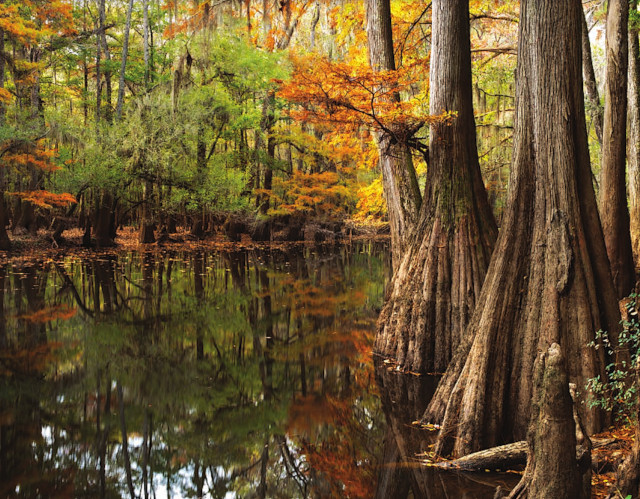 NPS PhotoThis project began as an outgrowth of ETS alumnus David Shelley’s action plan. The Climate Change Song was inspired by Dr. David Shelley's experience with climate change education at the Old-Growth Bottomland Forest Research and Education Center (OGBFREC) at Congaree National Park. Initially co-written with Congaree NP intern Chris Ramaglia, the song has developed over the years into a resource for use with a variety of internal and external audiences.
NPS PhotoThis project began as an outgrowth of ETS alumnus David Shelley’s action plan. The Climate Change Song was inspired by Dr. David Shelley's experience with climate change education at the Old-Growth Bottomland Forest Research and Education Center (OGBFREC) at Congaree National Park. Initially co-written with Congaree NP intern Chris Ramaglia, the song has developed over the years into a resource for use with a variety of internal and external audiences.
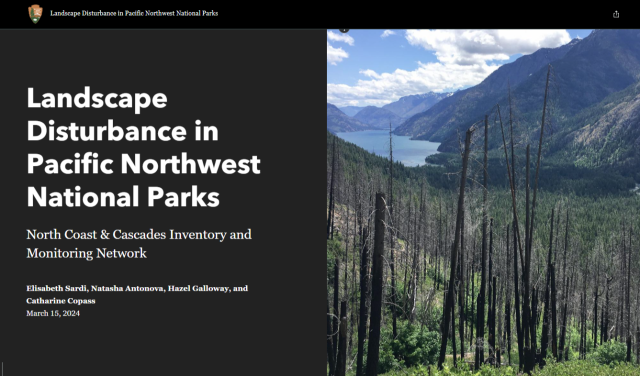
Check out this StoryMap shared to us from ETS community member Hazel Galloway and her colleagues Elisabeth Sardi, Natasha Antonova, and Catharine Copass, highlighting how NASA satellite data can complement data from the parks to create better storytelling!
The National Park Service’s inventory and monitoring program keeps track of “ecological vital signs”—sensitive indicators of environmental health tracked over years or decades.
In the North Coast & Cascades Network (NCCN), which is composed of eight parks across western Washington and Oregon, most of these vital signs are monitored in the field. Scientists sample water quality, measure glaciers, survey tidepool communities, and monitor subalpine meadows. This data helps the parks tell stories about the impacts climate change is having in real time—but also reveals some systems that are showing a surprising resilience to climate stresses.
 The brochure has been posted on the New Mexico State Parks website; download a copy of the PDF here: State of Change BrochureWhat can you do if you’re already interpreting the climate crisis in programs, but you suspect some of your agency co-workers may not accept climate science? Well, one option is to tackle that challenge within an Earth to Sky action plan.
The brochure has been posted on the New Mexico State Parks website; download a copy of the PDF here: State of Change BrochureWhat can you do if you’re already interpreting the climate crisis in programs, but you suspect some of your agency co-workers may not accept climate science? Well, one option is to tackle that challenge within an Earth to Sky action plan.
Here’s a new publication being distributed in New Mexico, developed by ETS Alumna, Pat Walsh, a regional interpretive ranger for New Mexico State Parks. It was developed when, working from home during the COVID quarantine over the last year, the opportunity allowed her to focus on developing the brochure. It’s adapted from a similar 2014 publication, “State of Change: Climate Change in Alaska’s National Parks."
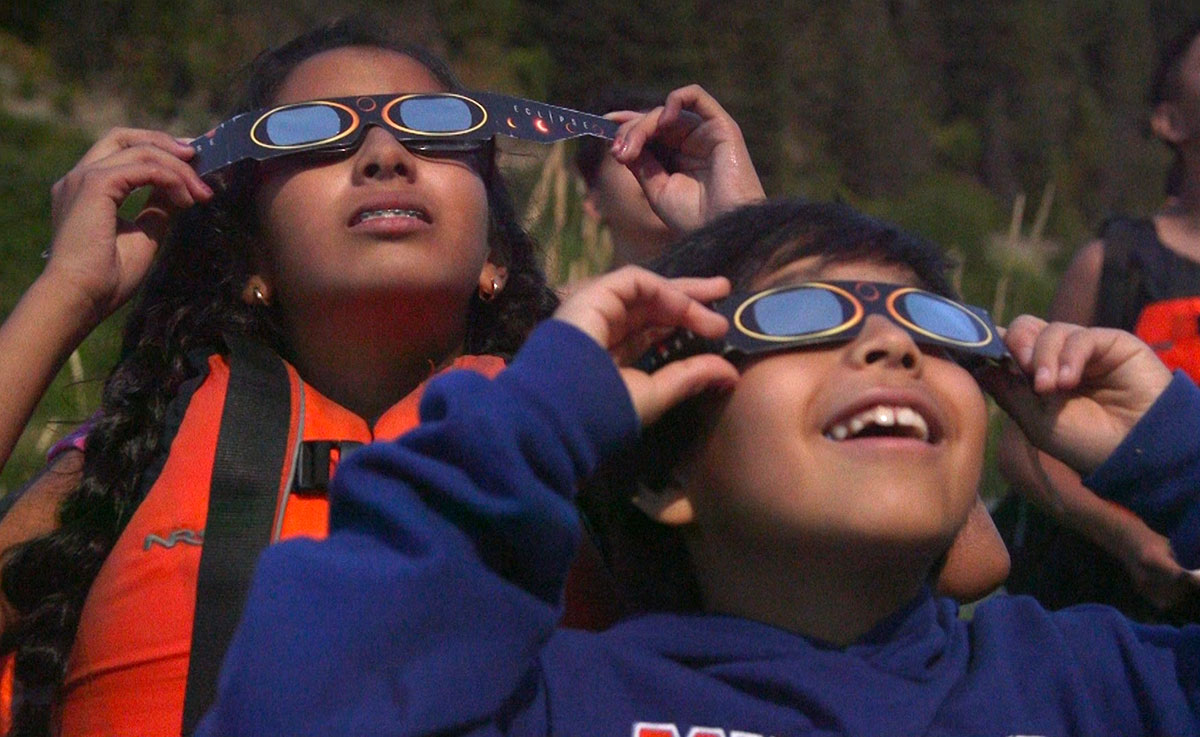 It’s been over a year since the 2017 total solar eclipse, but interpretive “magic” is never too late to showcase. Two audio stories about finding wonder in science through the experience of the eclipse are highlighted here. The storyteller is Kayla Bordelon, a PhD student at the University of Idaho in Moscow, Idaho. Kayla produced two audio stories in connection to the science education program for youth she helped coordinate for the eclipse. She was one of presenters at the NAI ETS course last year in Spokane, WA; her session was entitled “Climate Change for Youth Audiences."
It’s been over a year since the 2017 total solar eclipse, but interpretive “magic” is never too late to showcase. Two audio stories about finding wonder in science through the experience of the eclipse are highlighted here. The storyteller is Kayla Bordelon, a PhD student at the University of Idaho in Moscow, Idaho. Kayla produced two audio stories in connection to the science education program for youth she helped coordinate for the eclipse. She was one of presenters at the NAI ETS course last year in Spokane, WA; her session was entitled “Climate Change for Youth Audiences."
 Aaron and Angie Jungbluth were participants at the November 2017 EtS course held in Spokane, WA, just prior to the National Association for Interpretation’s national conference. They are volunteer Conservation Naturalists in their home state of Missouri. They developed this training material to be included as a regular part of their monthly volunteer coordination meetings. They expect the material will also be useful in several other venues in their vicinity.
Aaron and Angie Jungbluth were participants at the November 2017 EtS course held in Spokane, WA, just prior to the National Association for Interpretation’s national conference. They are volunteer Conservation Naturalists in their home state of Missouri. They developed this training material to be included as a regular part of their monthly volunteer coordination meetings. They expect the material will also be useful in several other venues in their vicinity.
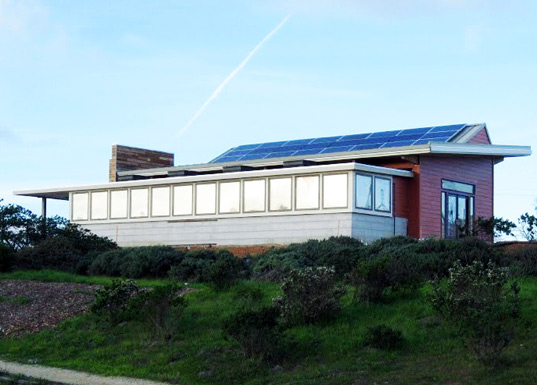 There’s a new program in the wind, so to speak, for residents near San Francisco Bay. Using the National Landmark scow schooner Alma, several agencies (some of whom are alumni from Earth to Sky PW), are joining together to create an education experience for underserved youths from the local community. Through hands-on science activities, and a place-based, culturally relevant climate change curriculum being developed by the partners of bay.org, organizers hope to empower and facilitate a feeling of ownership among the Bayview-Hunters Point youth, and inspire them to band together and make positive environmental change. Their key idea, that Bayview-Hunters Point’s past, present, and future depend on a diverse and healthy San Francisco Bay, is a point that should be easily apparent from the deck of the Alma.
There’s a new program in the wind, so to speak, for residents near San Francisco Bay. Using the National Landmark scow schooner Alma, several agencies (some of whom are alumni from Earth to Sky PW), are joining together to create an education experience for underserved youths from the local community. Through hands-on science activities, and a place-based, culturally relevant climate change curriculum being developed by the partners of bay.org, organizers hope to empower and facilitate a feeling of ownership among the Bayview-Hunters Point youth, and inspire them to band together and make positive environmental change. Their key idea, that Bayview-Hunters Point’s past, present, and future depend on a diverse and healthy San Francisco Bay, is a point that should be easily apparent from the deck of the Alma.
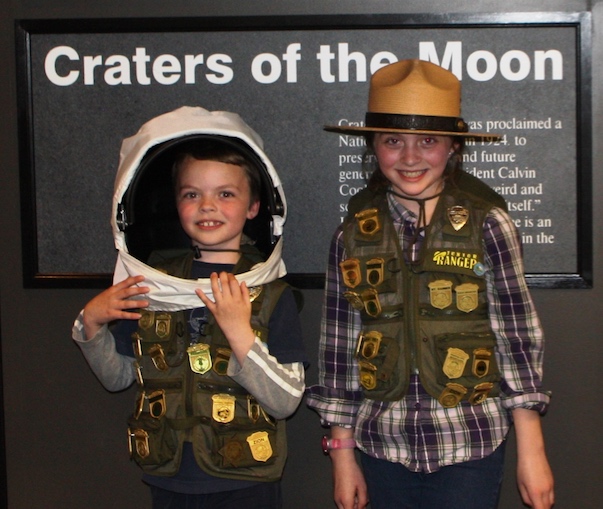 Craters of the Moon National Monument and Preserve (CRMO) is the only place in the universe where kids and their parents can become a Lunar Ranger. Ted Stout, Chief of Interpretation at the monument and alumnus/coach from many Earth to Sky courses, invites his visitors to get their own Lunar Ranger booklet on-site or on-line at the park website. That’s the best way to earn an official Lunar Ranger Mission Patch and to complete the interactive activities that help them to follow in the footsteps of the astronauts, to learn more about their own backyards here on Earth, and to reach beyond them, for the stars!
Craters of the Moon National Monument and Preserve (CRMO) is the only place in the universe where kids and their parents can become a Lunar Ranger. Ted Stout, Chief of Interpretation at the monument and alumnus/coach from many Earth to Sky courses, invites his visitors to get their own Lunar Ranger booklet on-site or on-line at the park website. That’s the best way to earn an official Lunar Ranger Mission Patch and to complete the interactive activities that help them to follow in the footsteps of the astronauts, to learn more about their own backyards here on Earth, and to reach beyond them, for the stars!
Lunar Ranger Website: https://www.nps.gov/crmo/learn/kidsyouth/index.htm
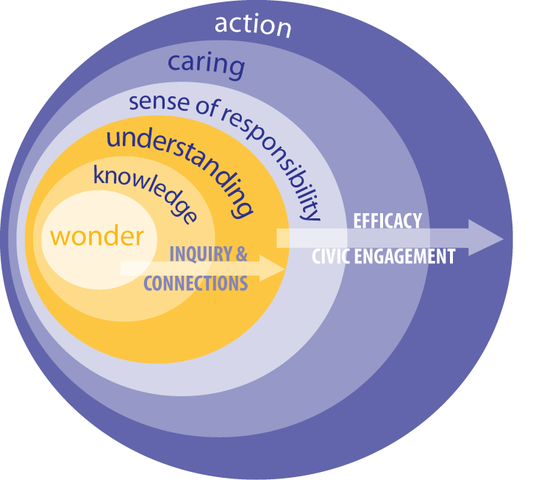 Here’s another product from the Marine Mammal Center, developed as guidance for staff in their ongoing programs and for climate-related educational products and curriculum, even those yet to be developed. With many members of their team producing curriculum and materials for school groups, summer camp, family overnights, informal interpretation and much more, they wanted to create a resource to support everyone in communicating and developing collateral around climate change. However, everyone had varying degrees of comfort with communicating climate change with different age groups and with accessing the infinite resources available for doing so. This guide was intended to be an intersection of research on the developmental stages of their audiences, Next Generation Science Standards (NGSS), reasonable climate change action steps, The Marine Mammal Center’s messaging and storytelling policies, and finally, serve as a synthesis of reliable and accurate science resources.
Here’s another product from the Marine Mammal Center, developed as guidance for staff in their ongoing programs and for climate-related educational products and curriculum, even those yet to be developed. With many members of their team producing curriculum and materials for school groups, summer camp, family overnights, informal interpretation and much more, they wanted to create a resource to support everyone in communicating and developing collateral around climate change. However, everyone had varying degrees of comfort with communicating climate change with different age groups and with accessing the infinite resources available for doing so. This guide was intended to be an intersection of research on the developmental stages of their audiences, Next Generation Science Standards (NGSS), reasonable climate change action steps, The Marine Mammal Center’s messaging and storytelling policies, and finally, serve as a synthesis of reliable and accurate science resources.
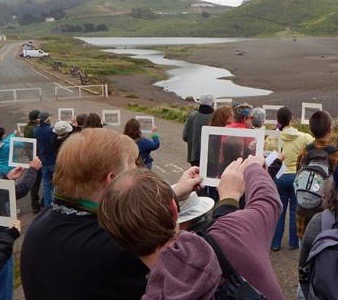 At our Climate Change Science and Communication course in San Francisco, we enjoyed a half-day field trip out to the Marin Headlands in Golden Gate National Recreation Area. During that trip, participants were treated to a field experience where they looked at the landscape through “magic windows” enabling them to see the past, literally, in the context of our modern day. Collectively, the group speculated about using this tool to envision a future landscape as well, possibly helping the viewers to come to a better understanding of the possible implications of a changing climate. We all thought it would make a great example to share with the whole EtS community.
At our Climate Change Science and Communication course in San Francisco, we enjoyed a half-day field trip out to the Marin Headlands in Golden Gate National Recreation Area. During that trip, participants were treated to a field experience where they looked at the landscape through “magic windows” enabling them to see the past, literally, in the context of our modern day. Collectively, the group speculated about using this tool to envision a future landscape as well, possibly helping the viewers to come to a better understanding of the possible implications of a changing climate. We all thought it would make a great example to share with the whole EtS community.
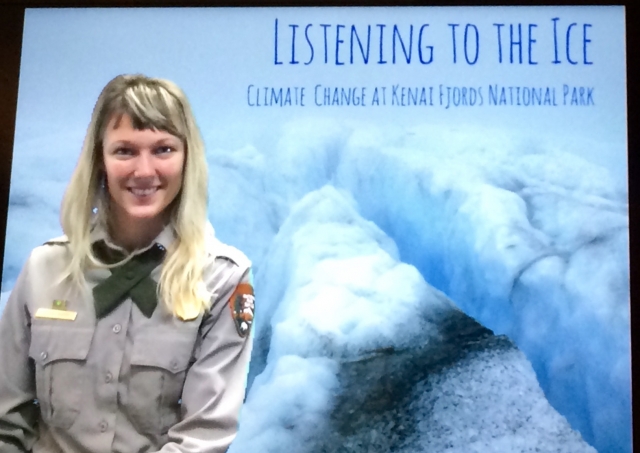 Earth to Sky alumni Fiona North has recently finished a successful distance learning season at Kenai Fjords National park, with a new climate related program entitled “Listening to the Ice.” It was added to their offerings following her attendance at the regional course held in Alaska, last October.
Earth to Sky alumni Fiona North has recently finished a successful distance learning season at Kenai Fjords National park, with a new climate related program entitled “Listening to the Ice.” It was added to their offerings following her attendance at the regional course held in Alaska, last October.
If you're wondering what global warming and climate change are, and what causes them, here's an easy way to see and hear first-hand how they are impacting our planet. Through this interactive live program, a park ranger engages students with questioning, video content and other techniques designed to broaden their local and global understanding of climate change and leave them with a hopeful attitude about the future of our natural environment.
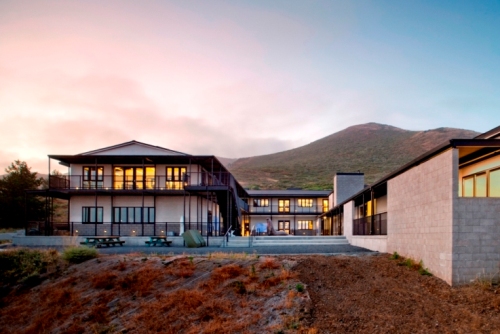 Each year, education programs at a popular California destination teach thousands of people about marine mammals and the urgent need for ocean stewardship. Expanding their programs offers visitors many different ways to learn about the center including guided tours, school programs, even sleeping over at the Center. Building on the success of their recent Climate Change Education Initiative with youth, the Center is now working to develop a new program to train 15-17-year-old high-school students within their eight-month service learning program, called Youth Crew.
Each year, education programs at a popular California destination teach thousands of people about marine mammals and the urgent need for ocean stewardship. Expanding their programs offers visitors many different ways to learn about the center including guided tours, school programs, even sleeping over at the Center. Building on the success of their recent Climate Change Education Initiative with youth, the Center is now working to develop a new program to train 15-17-year-old high-school students within their eight-month service learning program, called Youth Crew.
The Marine Mammal Center is a nonprofit veterinary research hospital and educational facility dedicated to the rescue and rehabilitation of ill and injured marine mammals – primarily elephant seals, harbor seals, and California sea lions. They’ve been open since 1975, headquartered in Sausalito, CA at the Marin Headlands.
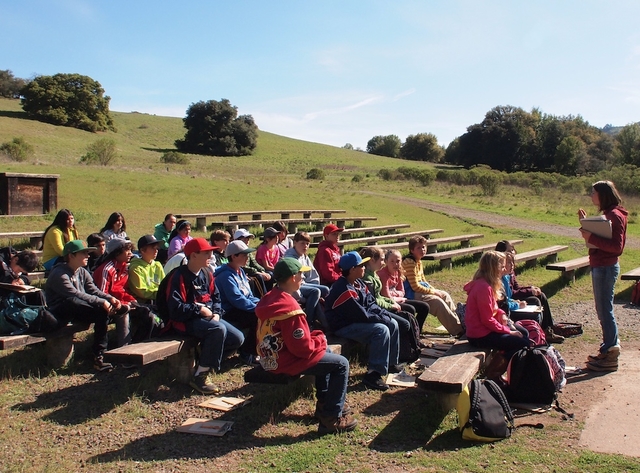 Here’s a new product being developed by ETS alumni from our 2016 course in San Francisco. Sonoma Ecology Center’s K-12 Watershed Education Programs are founded on place-based design, using Sonoma Valley as the lens for learning. This new addition, Climate Champions, will connect the concepts of climate science to the Sonoma Creek and San Francisco Bay watersheds, allowing students to explore complex earth systems while investigating the specific impacts of these systems on the place in which they live and learn.
Here’s a new product being developed by ETS alumni from our 2016 course in San Francisco. Sonoma Ecology Center’s K-12 Watershed Education Programs are founded on place-based design, using Sonoma Valley as the lens for learning. This new addition, Climate Champions, will connect the concepts of climate science to the Sonoma Creek and San Francisco Bay watersheds, allowing students to explore complex earth systems while investigating the specific impacts of these systems on the place in which they live and learn.
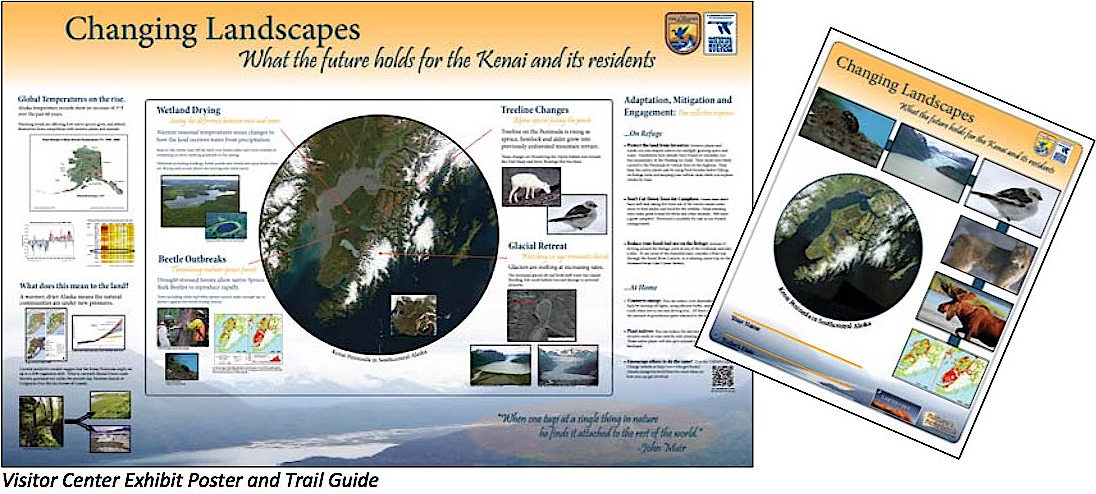
The Changing Landscapes program communicates the science behind Climate Change to the visitors to the Kenai National Wildlife Refuge Visitor Center in south‐ central Alaska. Climate change science is complex, intimidating and can be an overwhelming issue unless it’s interpreted in a clear, comprehensive and engaging manner. Several products were developed over 5 years, culminating in having the climate messages integrated into existing refuge themes and interpretive products across all operations.

